Projects
As both a faculty member and a graduate student, I have had the opportunity to work on a number of exciting, interesting, and diverse projects. These are just a few of those projects.
North Carolina Digital Learning Plan
In talking with the Friday
Institute's Director of Evaluation Programs, Dr. Jeni Corn, about some
of the research I had been conducting in North Carolina, she indicated
that sharing my findings and that of other scholars in the state could
help shape the formation fo the state's Digital Learning Plan.
Furthermore, this research would be put in front of state policy makers
to help inform their decision making on this and similar policies going forward.

Public Domain Technology Infused Lesson Plan Resource Center
The public domain has long been a topic of interest for me. There are a wealth of resources available for use for any number of uses without the usual restrictions imposed by copyright or limitations of Fair Use. In presenting about how public domain materaials could bse used in educational activities to a variety of K-12 teachers, library media specialists, and professors within North Carolina and at international conferences, I've received a lot of positive feedback and interest.This had led to the development of an online resource center hosting both links to both public domain digital libraries as well as lesson plans that utlize public domain resorces and are aligned to common core standards.
K-12 Technology Leader Online Community of Practice
Growing out of the desire to better support technology leaders that have taken classes with me and to continue those bonds formed during class discussions, I ended up designing an online community of practive. I have always assured students that even though the classes may end, I never stop being their professor and have also encouraged them to stay in touch with each other as their classmates would make for a strong network of technology leaders to communicate and collaborate with in the future. This resulted in some students still contacting months and years after taking a course with me and some of them staying in touch with each other. The community of practice allows these bonds to be strengthened and for members to benefit from the collectie intelligence of the community.
Instructional Technology MAEd Portfolio
| In the Fall 2012 the Instructional Technology department made the transition from a private portfolio server to a TaskStream portfolio implementation. I have been serving as the portfolio coordinator during this transition and heading up a working group that is refining the construction and layout process for students and the evaluation process for faculty members. | 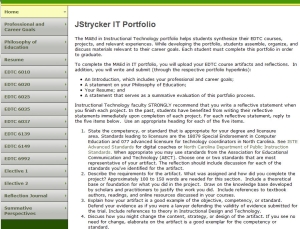 |
Teacher Quality Partnership
In the Fall 2012 on the suggestion of the College of Education Associate Dean for Research and an invitation from the grant director, I began regularly sitting in on Design Team Meetings and attending campus events related to the Teacher Quality Partnership (TQP) grant received by the East Carolina University College of Education. The TQP grants aims to improve the preparation of teachers and improve their students' performance scores. Since the budgeting for the year had already been completed, I served in a voluntary advisory role relating to intructional and technology questions that came up and provided information from research in the field as requested.
Plowing Freedom's Ground
| In 2010 I had the opportunity to do web development for the Plowing Freedom's Ground (PFG) project. The PFG project is an extension of the Persistant Issues in History network (PIHnet) project that has been developed for over a decade by Dr. Tom Brush at Indiana University and Dr. John Saye at Auburn University. My work on this project and related research has lead to the possibility of future colloboration involving problem-based learning and Web 2.0 tools for social studies education. | 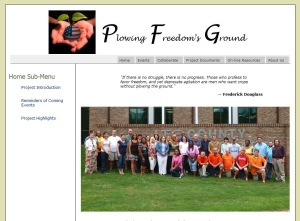 |
Information in Place, Inc. Internship Projects
In the Spring and Summer of 2007 I interned at Information in Place, Inc. a local company that was spun out of the School of Education's Center for Excellence in Education. They specialize in simulations, games, and augmented reality solutions for education and training. The main project I was I contributing to was the a database system for the U.S. Navy that would allow their instructors and trainers input different criteria to determine whether or not the use of simulations of games were appropriate for different training contexts, provide game play examples of such instances, and information on the level of fidelity that was attainable in the given context.
During my internship I served as a workflow analyst, an instructional designer, and a researcher. The workflow analysis had to do with reviewing the database design and processes and critique it from different user personas. The instructional design had to do with considering how the database would look and react and evaluating game play examples for learning opportunities and examples based on learning taxonomies. The research aspect of the job involved reviewing literature and preparing reports regarding assessment of learning in virtual environments, return on investment, and fidelity of simulations. I also participated in one of the initial brainstorming/design meetings for a product the company was collaborating on called Virtual Congress. It later became known as Oceana: A Virtual Democracy.
2007 Games for Health Competition - Game Design Entry
In the Spring of 2007 as part of an Independent Study in Human Computer Interactions course I collaborated with a teammate to enter the Games for Health National Storyboard and Prototype Competition. Our topic dealt with pandemic flu responses, specifically the H5N1 Avian Flu. We researched pandemic flu outbreaks from the past, spoke with incident commanders to learn about incident responses, and spoke with a doctor about symptoms and patterns of infections towards the goal of designing a simulation that could be used to train incident commanders to respond to pandemic flu outbreaks. We also worked along side another team that was designing a game that was geared towards getting children to have healthier lifestyles and eating habits. Both teams met often to present to each other and provide feedback and share suggestions. While our design did not win the competition, we did take pride in the other design team winning one of the categories.
Museum of the Person - Indiana, Design Project (now Musuem of the Person - USA)
In the Spring of 2006 as part of an Informatics course, Human Computer Interaction - Design II, I worked on a design team that had as its client the Museum of the Person - Indiana (MOP-I). MOP-I was inspired by the Museum of the Person - Brazil which intended to collect all of the stories from the people of Brazil. MOP-I did not have a clear plan on how it would develop, draw more attention to itself, or encourage more people to participate. The team conducted interviews and focus groups with key stakeholders in the organization. At the conclusion of the project we provided them with a design plan, a timeline, multiple options for the growth of the organization, and put on a memory gathering event that could serve as a model for similar events in the future.
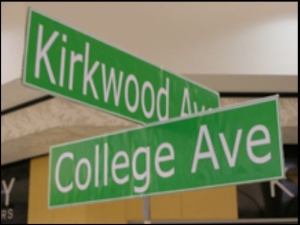 |
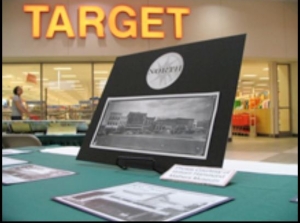 |
 |
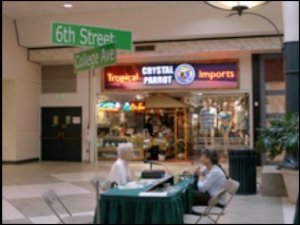 |
Wonderlab Museum of Science, Health, and Technology Needs Assessmet Report
In the Fall of 2005, as part of a course titled Needs Analysis and Assessment, I was part of a team that had as a client the WonderLab Museum of Science, Health, and Technology. The WonderLab wanted to know how they could attract more patrons, make the experience more beneficial and enjoyable to patrons, and how to counteract the tendency of either having too many customers or very few. As part of the project, the team conducted interviews with the professional staff, some of the volunteers, and some customers. The team also conducted multiple observations within the museum to note how children, parents, volunteers, and other patrons interacted with the exhibits and the environments. Team members also attended volunteer trainings and special events at the museum. Based on all of the data collected the client was given a presentation and report which included multiple analyses (PEST, SWOT, SWOTI, Force Field, and Impact), a migration strategy, recommendations, and value propositions.